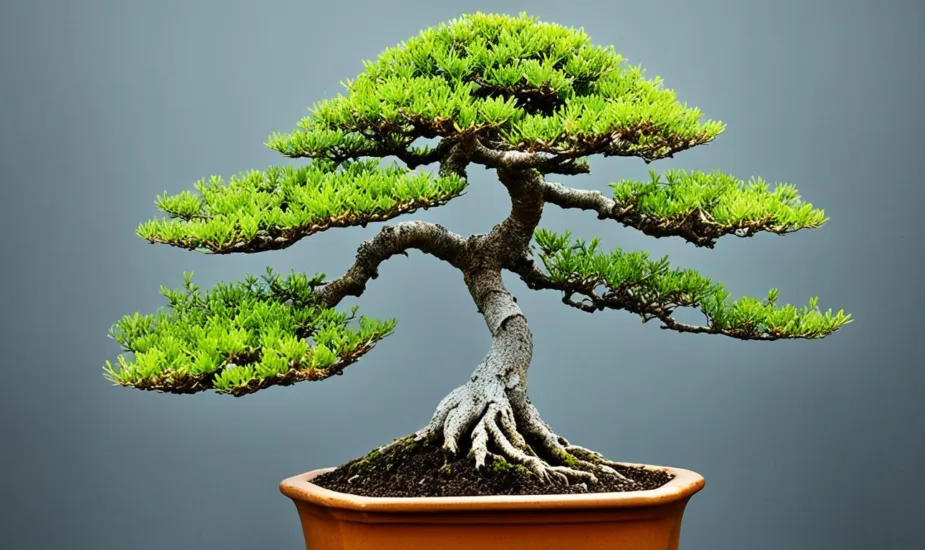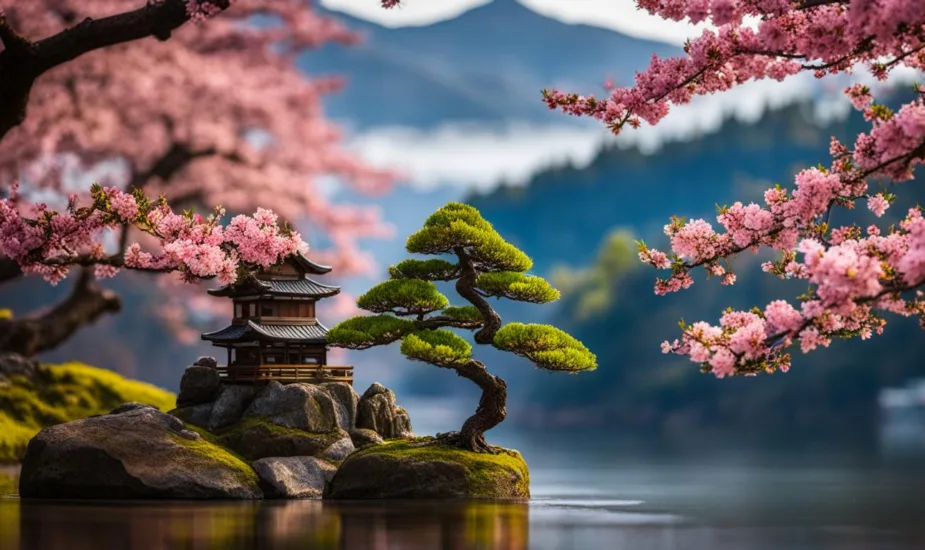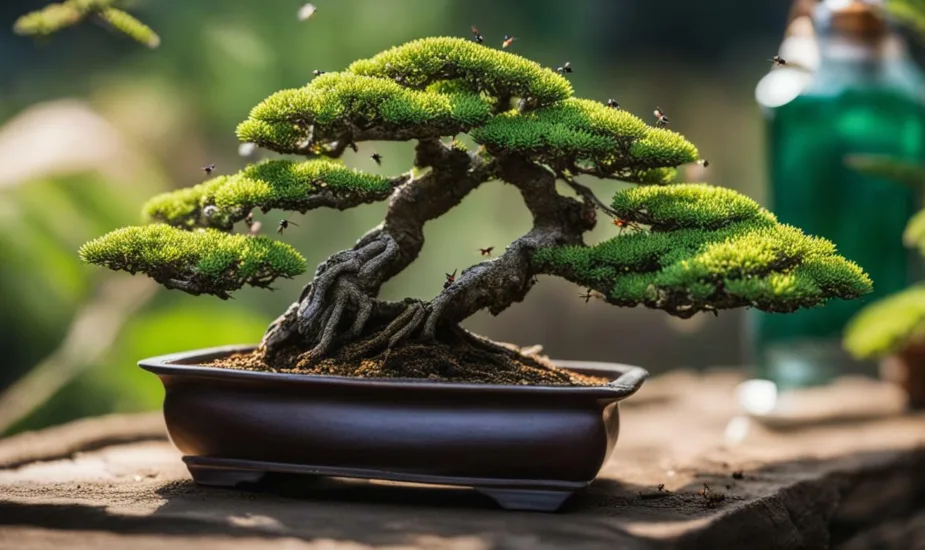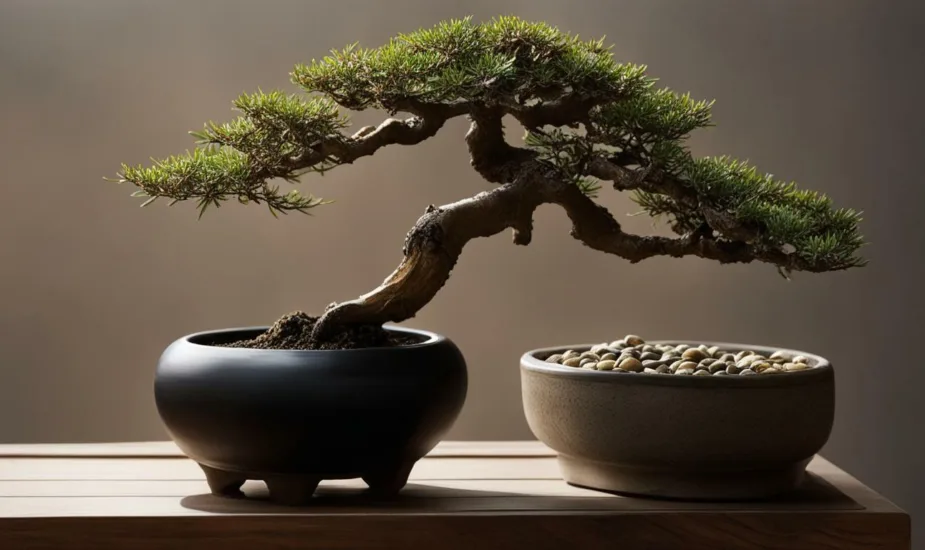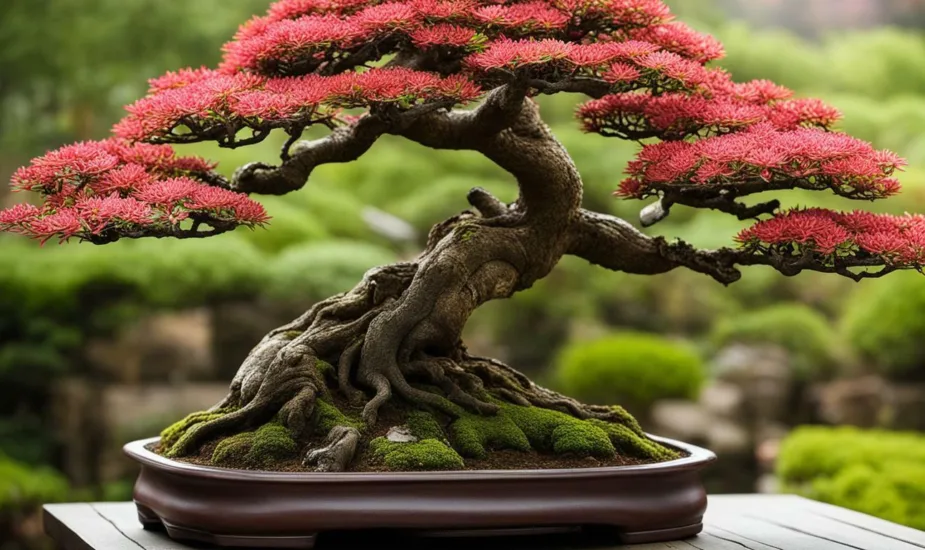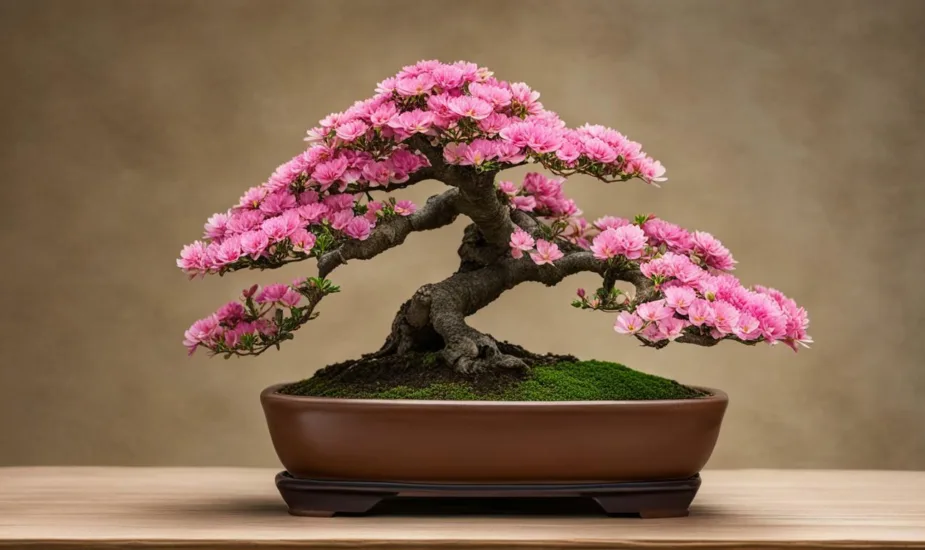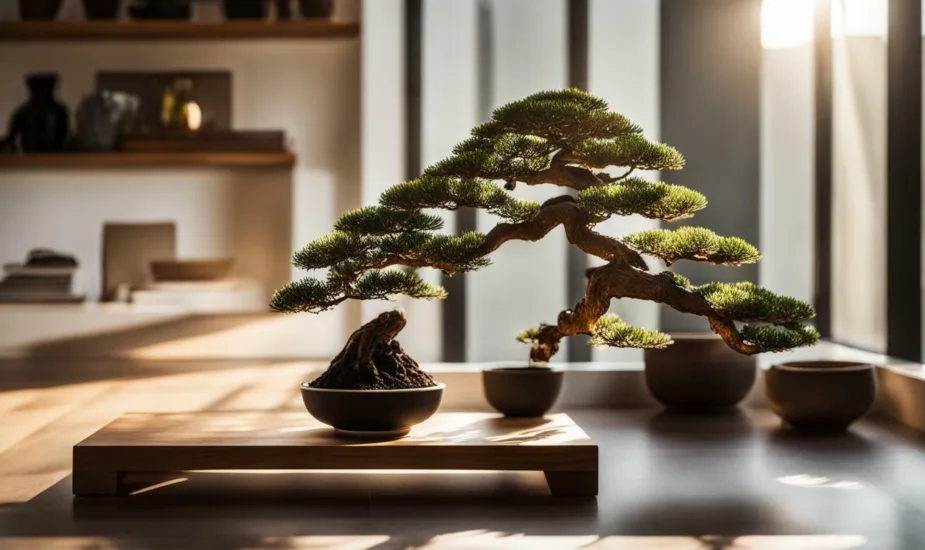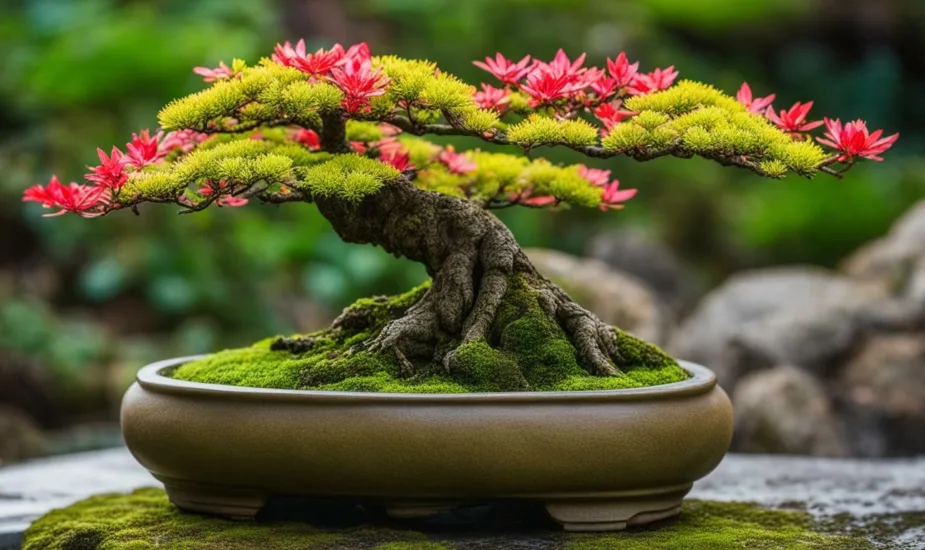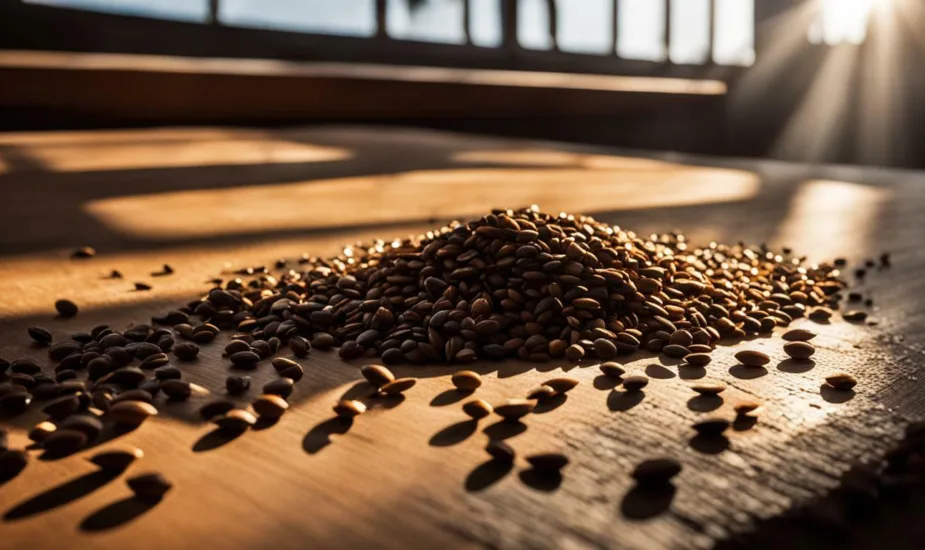Can Bonsai Trees Grow in Texas? Full Guide

If you’re a bonsai enthusiast in Texas, you may be wondering if bonsai trees can actually grow and flourish in the Lone Star State. The good news is, yes, bonsai trees can thrive in Texas! Whether you have limited space indoors or a spacious garden outdoors, there are options for growing these miniature works of art in the Texas climate.
Key Takeaways:
- Bonsai trees can grow in Texas, both indoors and outdoors.
- Outdoor bonsai trees are made from hardy evergreens or deciduous plants that require a cold period of dormancy during winter.
- Indoor bonsai trees are typically tropical plants that can survive in the indoor climate of a house.
- Recommended bonsai tree species for Texas include ficus, crassula, carmona, schefflera, calamondin, and more.
- Proper care involves watering, fertilizing, pruning, and repotting when necessary.
Now that we’ve established that bonsai trees can indeed grow in Texas, let’s dive deeper into the specific climate considerations and care tips to help you successfully cultivate your own bonsai trees in the Lone Star State.
Climate Considerations for Bonsai Trees in Texas
The climate in Texas can vary significantly depending on the region, making it crucial to choose the right bonsai tree species that can thrive in the local climate conditions. Whether you plan to cultivate bonsai trees indoors or outdoors, understanding the specific climate considerations is key to their successful growth.
Outdoor bonsai trees in Texas are typically made from hardy evergreen or deciduous plants that require a cold period of dormancy during winter. These trees should be able to withstand the temperature fluctuations and occasional freezing temperatures that can occur in some parts of the state. Popular outdoor bonsai tree species for Texas include juniper, cedar, pine, and maple. These trees are known for their resilience and adaptability to different climates, making them a suitable choice for the diverse Texas weather.
Indoor bonsai trees, on the other hand, are typically tropical plants that can survive in the indoor climate of a house. These trees thrive in temperatures between 60 to 75 degrees Fahrenheit and require high humidity levels. Some recommended indoor bonsai tree species for Texas include ficus, crassula, schefflera, and bougainvillea. These tropical trees can add a touch of greenery and serenity to your indoor spaces, with their unique aesthetic appeal and ability to thrive in controlled environments.
It’s important to note that almost any tree or shrub can be turned into a bonsai by pruning the roots and foliage to keep it dwarfed. However, beginners are advised to start with hardy and forgiving species that are easier to care for. Alongside the aforementioned species, other recommended bonsai tree species for beginners in Texas include carmona, calamondin, sand pear, gardenia, jacaranda, jasmine, pomegranate, Chinese elm, olive, and rosemary. These species offer a variety of leaf shapes, colors, and flowering patterns, allowing bonsai enthusiasts to experiment and create unique compositions.
| Bonsai Tree Species | Outdoor/Indoor | Climate Suitability |
|---|---|---|
| Juniper | Outdoor | Resilient, adapts to different climates |
| Cedar | Outdoor | Tolerates temperature fluctuations |
| Pine | Outdoor | Withstands occasional freezing temperatures |
| Maple | Outdoor | Cold-hardy, thrives in different climates |
| Ficus | Indoor | Thrives in controlled indoor climate |
| Crassula | Indoor | Adapts well to indoor environments |
Regardless of the species chosen, proper care is essential for the health and longevity of bonsai trees in Texas. Watering should be done carefully, ensuring the soil is moist but not overly saturated. Fertilizing with a bonsai-specific liquid fertilizer is important to provide essential nutrients. Repotting should be carried out when necessary to ensure the tree’s root system remains healthy and able to support its growth.
Remember, bonsai trees require time and patience to grow and develop their desired shape. Regular pruning and wiring are necessary techniques to shape and maintain the bonsai tree’s form. By following these climate considerations and implementing the right care practices, you can enjoy the beauty and serenity of bonsai trees in Texas.

Growing bonsai trees in Texas can be a rewarding experience, but it requires careful consideration of the climate conditions and proper care to ensure the health and longevity of your bonsai trees. Whether you choose to cultivate them indoors or outdoors, there are a few key factors to keep in mind for successful bonsai tree growth in Texas.
First and foremost, selecting the right bonsai species for the Texas climate is crucial. Outdoor bonsai trees in Texas are typically made from hardy evergreens or deciduous plants that require a cold period of dormancy during winter. Some recommended species for beginners include ficus, crassula, carmona, schefflera, calamondin, and sand pear. These varieties are more resilient and can withstand the climate fluctuations in Texas.
When it comes to caring for your bonsai trees, proper watering is essential. Bonsai trees should be watered regularly, but it’s important to avoid over-watering as it can lead to root rot. Finding the right balance and monitoring the moisture levels in the soil is crucial for the health of your bonsai trees.
In addition to watering, fertilizing your bonsai trees with a bonsai-specific liquid fertilizer is essential to provide them with the necessary nutrients. Regular fertilization will promote healthy growth and enhance the overall vitality of your bonsai trees.
Lastly, it’s important to keep an eye on the overall condition of your bonsai trees and perform necessary maintenance tasks. This includes repotting the trees when necessary to provide them with fresh soil and ensure proper root development. Additionally, pruning the foliage and wiring the branches to shape your bonsai trees is crucial for maintaining their desired form.
With time and patience, your bonsai trees will grow and develop their unique beauty. By following these expert tips and providing the right care, you can enjoy the art of bonsai tree cultivation in the diverse climate of Texas.
FAQ
Can bonsai trees grow in Texas?
Yes, bonsai trees can grow in Texas, both indoors and outdoors.
What types of bonsai trees are suitable for outdoor cultivation in Texas?
Outdoor bonsai trees in Texas are typically made from hardy evergreens or deciduous plants that require a cold period of dormancy during winter.
What types of bonsai trees are suitable for indoor cultivation in Texas?
Indoor bonsai trees in Texas are typically tropical plants that can survive in the indoor climate of a house.
Can any tree or shrub be turned into a bonsai in Texas?
Almost any tree or shrub can be turned into a bonsai in Texas by pruning the roots and foliage to keep it dwarfed.
What are some recommended bonsai tree species for beginners in Texas?
Recommended bonsai tree species for beginners in Texas include ficus, crassula, carmona, schefflera, calamondin, sand pear, bougainvillea, gardenia, jacaranda, jasmine, pomegranate, Chinese elm, olive, and rosemary.
How should bonsai trees be cared for in Texas?
Bonsai trees in Texas should be watered properly, fertilized with a bonsai-specific liquid fertilizer, and repotted when necessary.
How long does it take for a bonsai tree to grow and develop its desired shape in Texas?
Growing and developing a bonsai tree into its desired shape in Texas takes time and patience.
What are some key care techniques for bonsai trees in Texas?
It is important to provide the right care and maintain appropriate watering, pruning, and wiring techniques to ensure the health and longevity of bonsai trees in Texas.
 Little Garden Tips
Little Garden Tips




